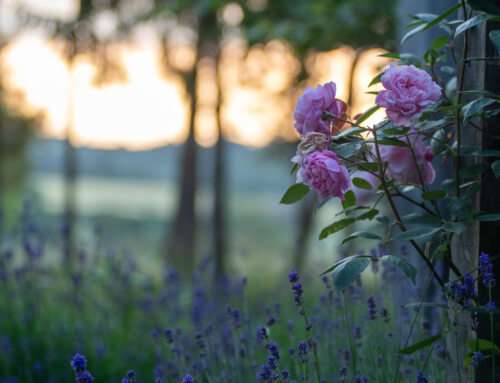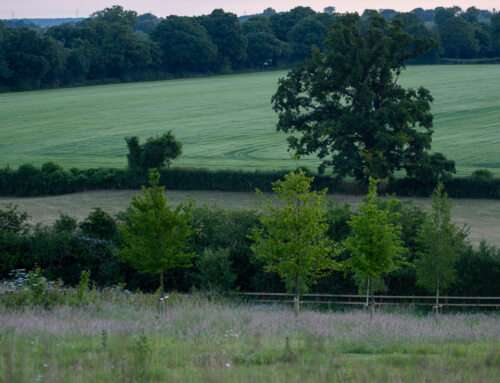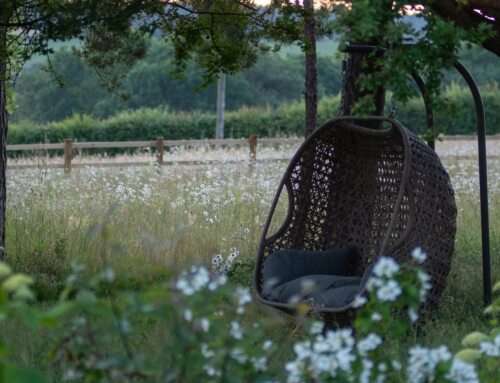Planting for Climate Resilience: Part 2

By Katie Stevens, Forestry Assistant
Throughout the world, we are experiencing the effects of climate change with unpredictable, extreme and out of season weather conditions. This is the second of three blogs that will look at various species that are predicted to cope with the stressors of climate change. Each section will include a short description of the tree’s appearance, properties and its potential to thrive in the future.
The next two species:
- Robinia pseudoacacia – False acacia / Black locust / Robinia
- Abies grandis – Grand fir
Robinia pseudoacacia – False acacia / Black locust / Robinia
First introduced to Europe in the 1640s by J. Robin, a French botanist, False acacia is a broadleaved tree native to North America. A very interesting fact about this species is that it is part of the third largest family of flowering plants called Fabaceae, which includes over 19,000 different species, such as beans, peas and nuts. Many species within this family produce root nodules that contain a bacteria called Rhizobium, allowing the plant to fix nitrogen both within the soil and the atmosphere. In Europe, Robinia is one of only a few tree genuses that have this incredible ability. It also produces suckers from its roots to reproduce, similar to cherries and plums. These can cause issues in a domestic setting. For example, roots that are damaged due to mowing or digging will trigger suckers.
It is an attractive tree, both to humans and insects alike! Foliage is bright but dark green, with leaves made up of 5-11 pairs of smaller leaves, called leaflets. Yellowy-white flowers droop in dense clusters under the leaves during late spring and summer, turning into bean-like pods of seeds in the autumn. These are a good source of nectar and food for insects and animals. However, like other flowering species, such as hawthorn and dog rose, it has incredibly sharp thorns along its branches and twigs, which can put people off planting in a domestic or public setting. But if pruned well to keep the main stem clear of branches, called a crown lift, this will keep such thorny branches out of harm’s way and expose the handsomely rough, fissured bark.
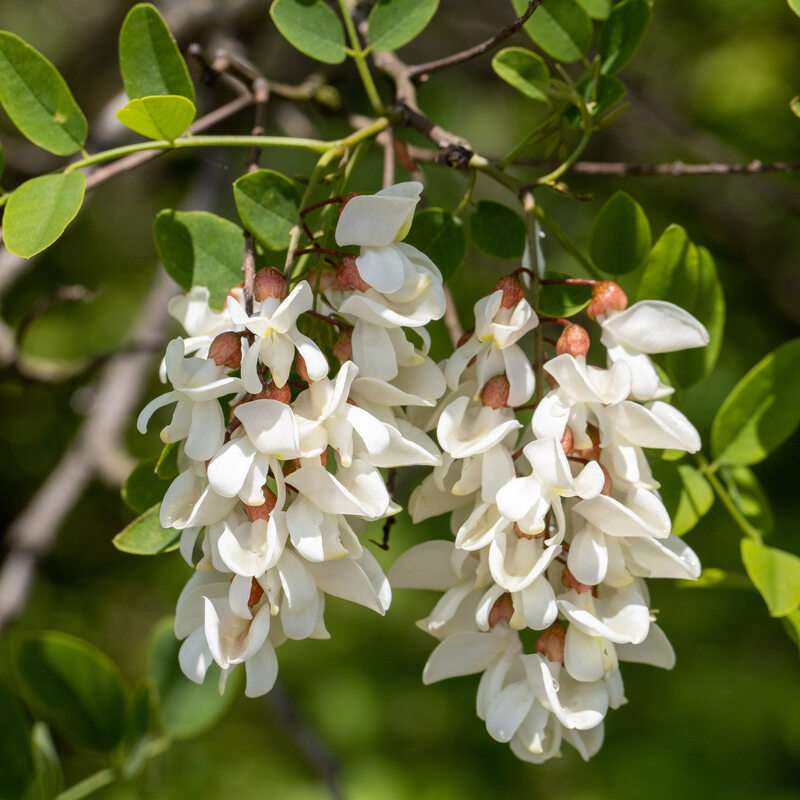
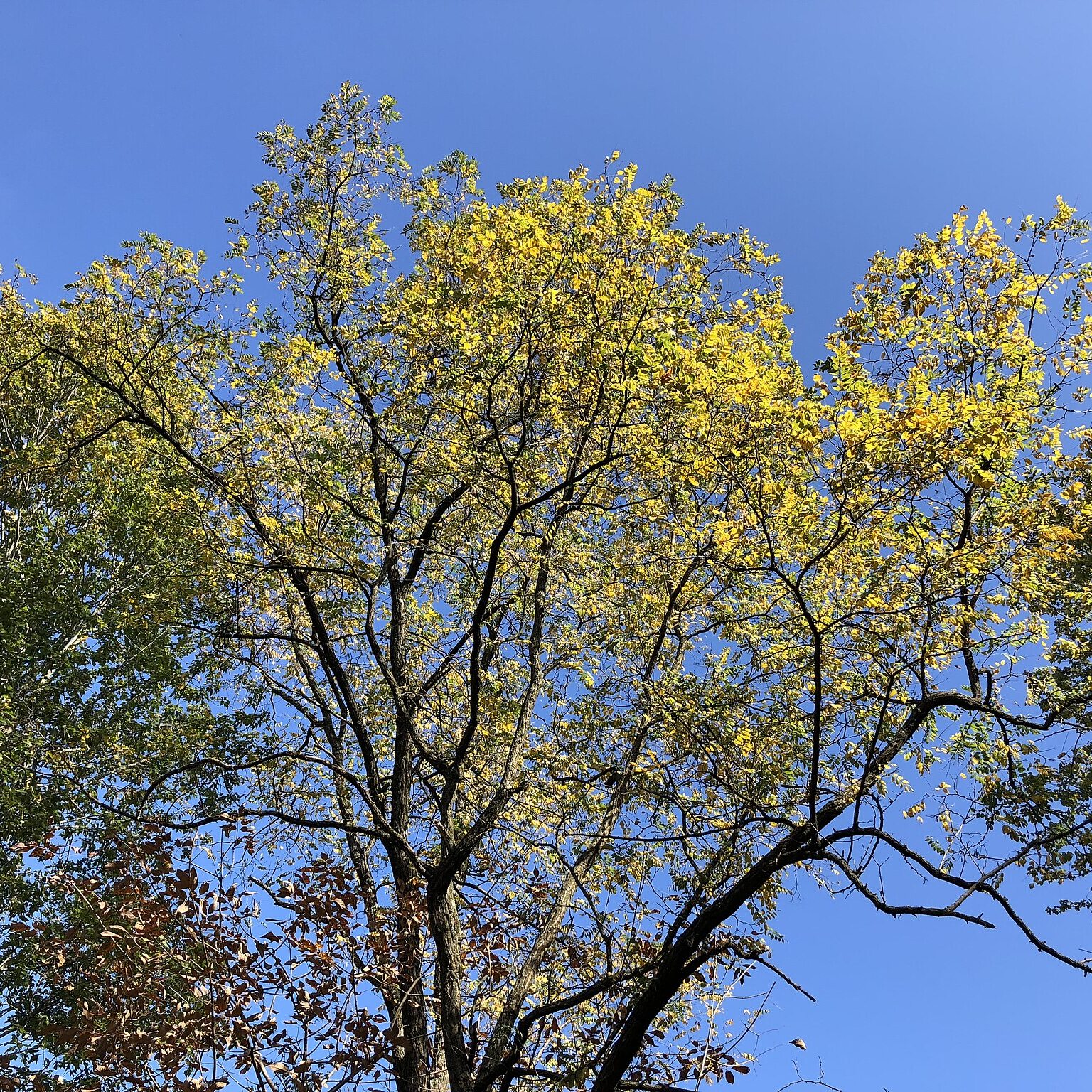
Unlike the more water tolerant species previously described in this blog, Robinia is the complete opposite! It will grow well on calcareous, sandy, loamy soils that have pH ranges from mildly acidic to neutral. It will also grow on infertile, dry and stressed sites, such as filled landfill, reclaimed areas and ground that has been disturbed. It doesn’t like to be on exposed ground, preferring more sheltered, milder sites, although it is a very frost, drought and pollution-tolerant tree. Such conditions make it a perfect lowland species as well as being climate resilient. False acacia is a relatively short tree species, only reaching heights of 25m, but is very fast growing. In certain conditions, it can grow between 1.5m-3m a year, especially when young.
In summary, for those areas of land in the south of England that have dry, poor-quality soils, Robinia would be a good option as a small, defensive but biodiverse species to plant.
Abies grandis – Grand fir
Reaching heights of over 50m tall, Grand fir has a straight yet tapered stem with brownish-grey, smooth bark that cracks and peels as it matures. It has a narrow, conical crown of dense, dark green needles. As it ages, the crown begins to lightly thin but retain its pointed shape. Unlike other conifer species, such as Scots pine, it tends to retain its lower branches. From above, it may look like other firs, with its flat, green needles of varying sizes between 2-5cm, but on the underside, Grand fir needles have two strikingly bright, white-grey stripes. The seed cones are greeny-yellow when ripening and sit upright on top of the branches. They are of a similar shape to its crown, being fairly cylindrical but have more rounded tips. They are, however, one of the smallest fir cones, at only 5-7cm tall. Because of this, they produce low amounts of seed compared to other fir species.
First introduced to Britain in the 1830s, Grand fir originates from the Pacific coast of America, including Oregon and British Columbia, where the climate is similar to Britain. It thrives in the wetter parts of the UK, such as Scotland and Cumbria, with high rainfall and low, sheltered elevations in valley bottoms and plains. It does not do well on exposed ground or high elevation slopes due to its susceptibility to wind and exposure, leading to trees falling over and breaking. The preferred soil type is well draining, deep and moist, as it is one of the deepest rooting conifer species.
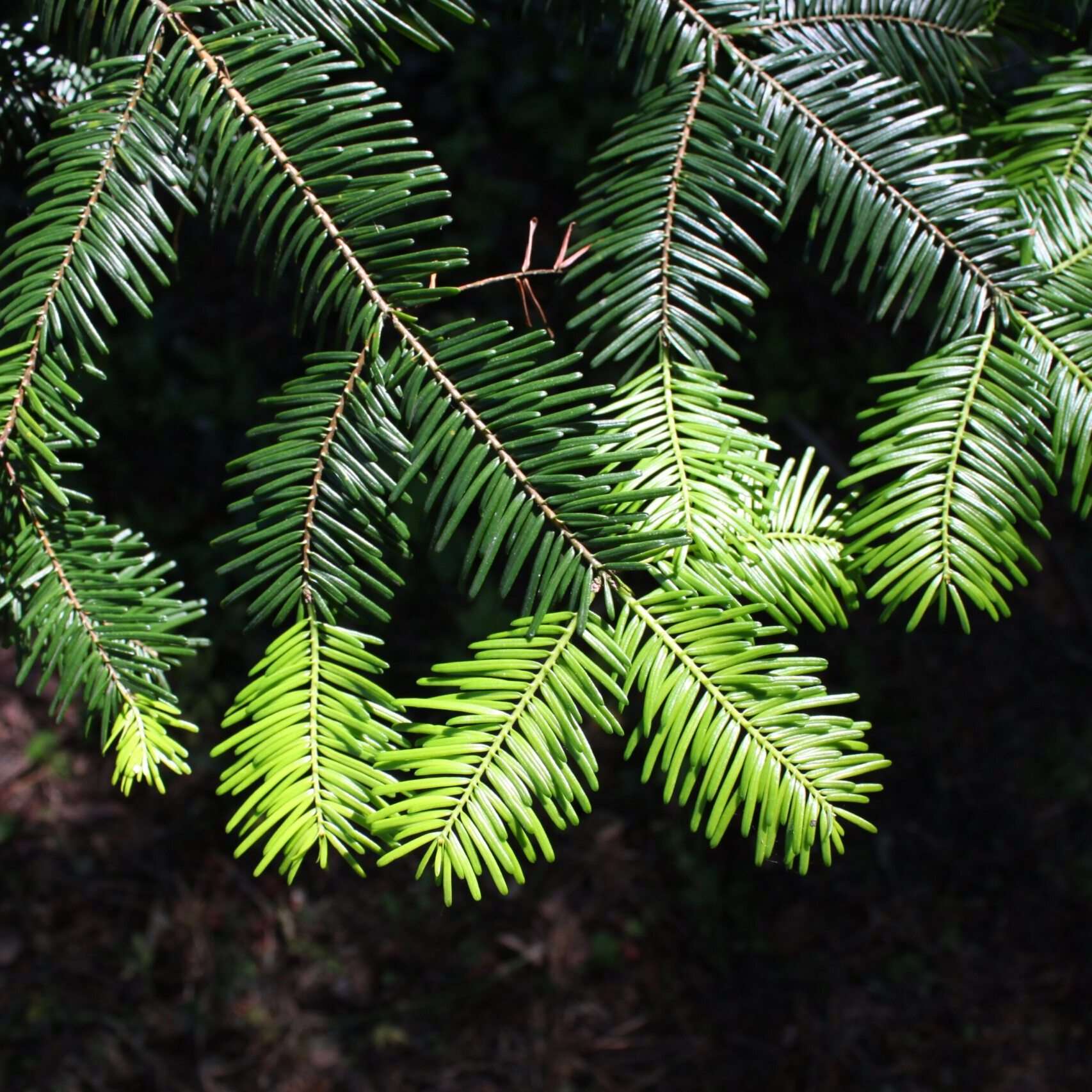
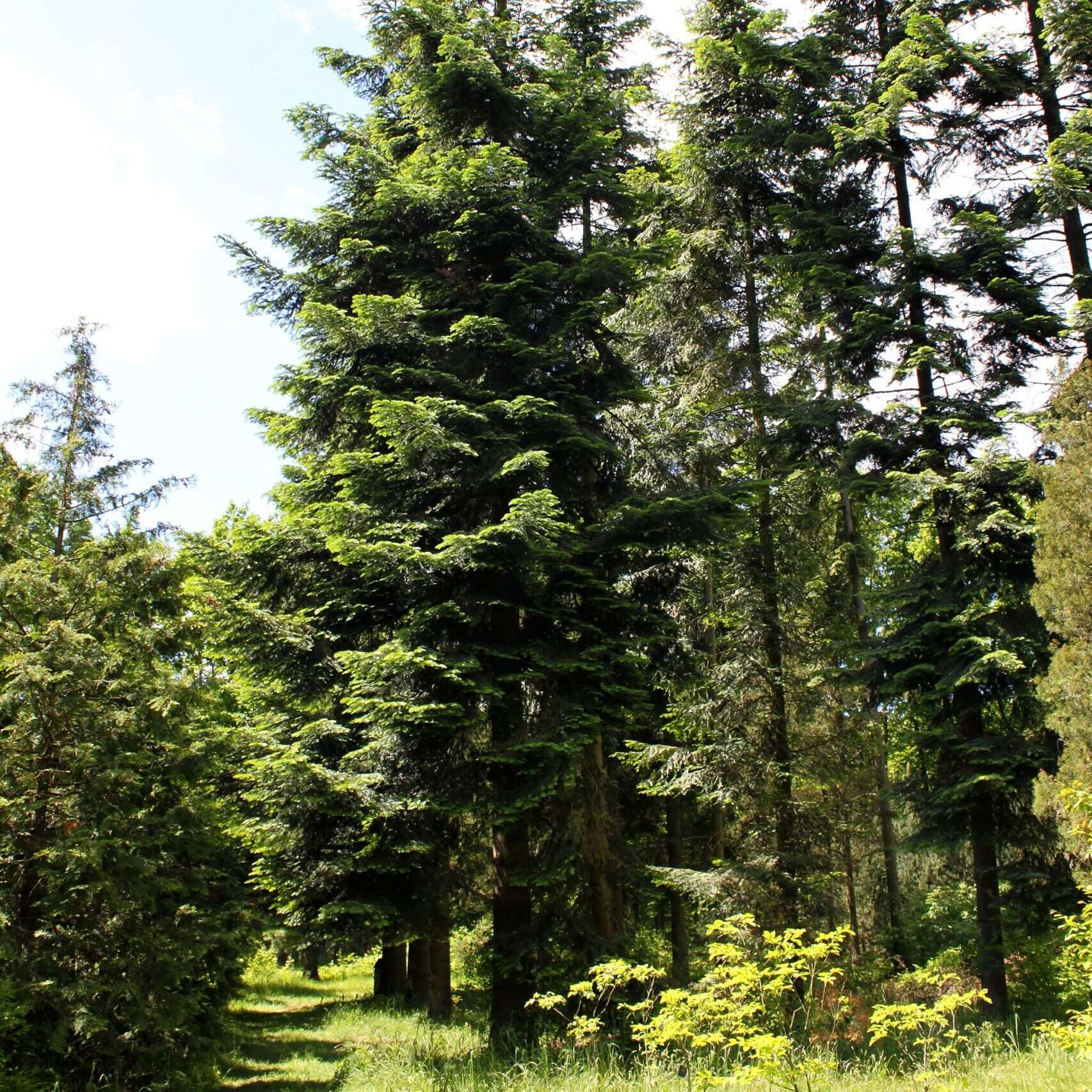
Grand fir is incredibly shade tolerant. While it may be tempting to plant under existing trees, it will soon outgrow its space and tower over other plants and trees. It is one of the most fast-growing conifers when situated in its prime conditions. On average, it can grow 1m in height annually for the first 40 years! It is a good choice to plant on unproductive, sheltered areas, singly or as part of a wider fast-growing species mix. It makes an excellent species choice for screening purposes, due to its lofty heights and dense branching, as well as a ‘grand’ choice for parkland roundels or singular trees.
Here at Nicholsons, we are continually researching and experimenting with tree species, widening our specialist knowledge, establishing new connections with other nurseries or growing a variety of different species. This year, we have been growing various non-native tree species from seedlings that are predicted to suit the changing climate. Why not visit our Plant Centre where our plants team would be more than happy to advise you on what we currently have available. Alternatively, you can email us at: plants@nicholsonsgb.com
Click here to read the first edition of our ‘Planting for Climate Resilience’ series.

